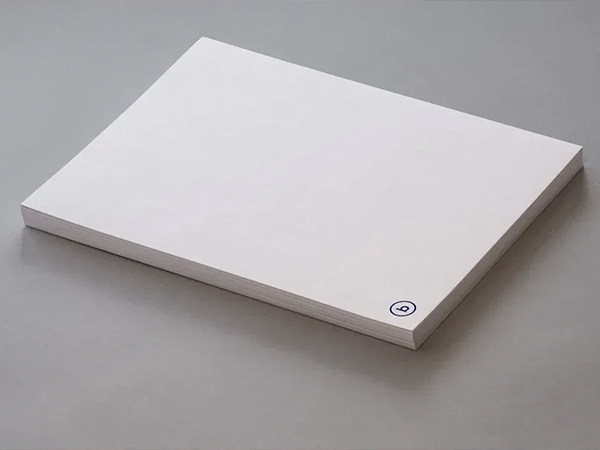What is a Dry Strength Agent?
A dry strength agent is a chemical additive used in papermaking to improve the tensile, burst, and folding endurance of paper in its dry state. These agents are particularly important when the paper contains a high proportion of recycled fiber or mineral fillers, which tend to weaken the bonding between cellulose fibers. By strengthening inter-fiber bonds, dry strength agents help papermakers meet stringent quality requirements without significantly increasing basis weight.
Chemical classifications of dry strength agents include:
- Cationic Starch – A naturally derived, modified starch with positive charges that enhance bonding with negatively charged pulp fibers.
- Cationic Polyacrylamide (CPAM) – A synthetic, high molecular weight polymer with strong retention and bonding capabilities.
- Anionic Polyacrylamide (APAM) – Sometimes used in combination with cationic co-additives for specific process conditions.
- Polyamidoamine–epichlorohydrin (PAE) and Glyoxalated Polyacrylamide (GPAM) – Synthetic resins designed for specific paper grades where additional wet strength is also beneficial.
Working Mechanism and Strengthening Principle
The effectiveness of a dry strength agent comes from its ability to increase hydrogen bonding between cellulose fibers in the paper sheet.
The mechanism typically involves:
- Adsorption – The cationic groups in the dry strength agent attach to the anionic sites on pulp fibers and fines.
- Film Formation – During drying, the polymer or starch forms a thin film between fibers, acting as a bridge that strengthens the sheet structure.
- Hydrogen Bonding Enhancement – Functional groups such as hydroxyl (-OH), amide (-CONH₂), or glyoxal aldehydes improve molecular-level interactions between fibers.
By improving inter-fiber bonding without adding extra pulp, dry strength agents can help maintain light paper grades while achieving higher performance.
Applications in Different Paper Grades
Dry strength agents are widely applied in various paper and board grades, including:
- Cultural Paper (Printing & Writing Grades)
- Improves tensile strength and folding endurance for smooth printing operations.
- Allows higher filler loading without compromising sheet integrity.
- Packaging Paper & Board
- Enhances ring crush test (RCT) and edge crush (ECT) for corrugated mediums and linerboards.
- Improves converting performance and box compression strength.
- Tissue and Towel Paper
- Provides strength while maintaining softness and absorbency.
- Supports high-speed tissue machine operation.
- Specialty Grades
- Filter paper, label stock, and decorative laminates benefit from enhanced tensile and burst resistance.
Synergy with Other Papermaking Chemicals
Dry strength agents often work best when used in combination with other additives:
- Sizing Agents (AKD, ASA, Surface Sizing)
- Improve water resistance while maintaining sheet strength.
- Dry strength agents ensure that sizing chemicals are retained effectively in the sheet.
- Wet Strength Resins (PAE, MF)
- In grades requiring both dry and wet durability (e.g., liquid packaging board, kitchen towels), dry and wet strength agents complement each other.
- Retention and Drainage Aids (PolyDADMAC, CPAM Systems)
- Enhance retention of fine particles and fillers, allowing better distribution of the dry strength polymer within the fiber network.
- Deinking Chemicals
- When producing recycled paper, dry strength agents help offset the loss of fiber bonding potential due to fiber hornification.
Product Selection Guidelines
When choosing a dry strength agent, papermakers should consider:
- Fiber Type – Virgin fiber generally requires less dosage than recycled fiber.
- pH and Process Conditions – Cationic starch and CPAM perform well in neutral to alkaline systems; GPAM and PAE have broader pH stability.
- Dosage Optimization – Typical use levels range from 0.2% to 1.0% of dry pulp weight, depending on grade and target properties.
- Compatibility – Ensure the dry strength agent is compatible with other wet-end additives to avoid deposit formation or performance loss.
- Sustainability Goals – Bio-based cationic starches are preferred for mills aiming for eco-friendly production and reduced synthetic polymer use.
Performance Comparison
| Type | Origin | Charge Type | Main Advantages | Typical Use |
|---|---|---|---|---|
| Cationic Starch | Natural (corn, potato, tapioca) | Cationic | Renewable, cost-effective, good film formation | Cultural, packaging, tissue |
| CPAM | Synthetic polymer | Cationic | High efficiency at low dosage, excellent retention | High-filler grades, recycled board |
| GPAM | Synthetic polymer | Anionic | Works in acidic conditions, offers both dry and temporary wet strength | Specialty papers |
| PAE Resin | Synthetic polymer | Cationic | Strong permanent wet strength, moderate dry strength gain | Liquid packaging, tissue |
Why Choose Amazon Chemicals’ Dry Strength Solutions?
At Amazon Chemicals, we offer a complete portfolio of dry strength agents designed to meet the demands of modern papermaking. Our solutions:
- Improve paper strength without increasing basis weight
- Support higher filler levels for cost savings
- Work effectively with other wet-end chemicals for optimized performance
- Meet regulatory requirements for food-contact and eco-label certifications
Call to Action
Ready to improve your paper’s strength and efficiency?
📩 Contact us today to learn more about our dry strength agent solutions or request a technical consultation.






